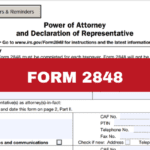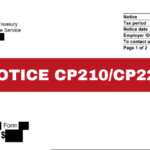Tax season can be overwhelming, but failing to file your tax return can lead to even bigger issues. If you don’t file your return, the IRS might step in and file one for you under their Substitute for Return (SFR) program, or informally called substitute return. This process is rarely in your favor.
In this post, we’ll explore what an SFR is, how the process works, and why it’s important to file your own tax return.
What is a Substitute for Return (SFR)?
A Substitute for Return (SFR) is a tax return prepared by the IRS on behalf of a taxpayer who has failed to file their own return. The SFR program is designed to enforce tax compliance.
The IRS uses information from third-party sources, such as employers and financial institutions, to prepare these returns. However, SFRs do not include any deductions, exemptions, or credits that the taxpayer might be eligible to claim, often resulting in a higher tax liability.
Put another way, the IRS will not give you any benefit of the doubt when it comes to the tax liability they compute for you via an SFR. As such, its best to file your own return and avoid the need for the IRS to file one for you. In the case that the IRS has filed a substitute for return on your behalf, then you will likely want to dispute the return and/or file your own return with correct figures, claiming any and all deductions and exemptions that are rightfully yours to claim.
How Does the SFR Process Work?
- Identification of non-filers
The IRS identifies individuals who have not filed required tax returns by comparing income records (like W-2s and 1099s) against filed tax returns. - Initial contact
Before preparing an SFR, the IRS sends notices to the taxpayer, encouraging them to file their own return. These notices serve as reminders that filing is overdue and that the taxpayer should take action. - Preparation of the SFR
If the taxpayer still does not file, the IRS will use the available third-party information to prepare an SFR. This return typically:
• Uses the filing status that results in the highest tax liability (often single or married filing separately)
• Includes income reported to the IRS but excludes deductions, exemptions, and credits, which usually leads to a higher tax bill - Notice of Deficiency
Once the SFR is prepared, the IRS sends a Notice of Deficiency, also known as a 90-day letter. This notice informs the taxpayer of the proposed assessment and gives them 90 days to respond by:
• Filing their own return
• Disputing the IRS’s findings
• Petitioning the Tax Court if they disagree with the assessment - Final Assessment and Collections
If the taxpayer does not respond within the 90-day period, the IRS finalizes the assessment based on the SFR. The taxpayer will be responsible for the taxes, interest, and potential penalties, and the IRS may begin collection actions such as levies or liens to recover the unpaid taxes.
Why You Should Avoid an SFR
Although it might seem like a relief to have the IRS file a return on your behalf, allowing this to happen can lead to several significant disadvantages:
- Higher tax liability
SFRs are often less favorable because they don’t account for deductions and credits you might qualify for, resulting in a higher tax bill. - Penalties and interest
Failing to file your own return can lead to significant penalties and interest on unpaid taxes, increasing your overall liability. - Collection actions
Once the IRS finalizes the assessment, they can take aggressive collection actions to recover the unpaid taxes, including wage garnishments, bank levies, and property liens.
How to Avoid an SFR
- File on time.
The best way to avoid an SFR is to file your tax return on time. Even if you can’t pay the full amount you owe, filing on time can help you avoid penalties for late filing. - Request for an extension.
If you need more time to prepare your return, request an extension. This gives you until October 15th to file, but remember that it doesn’t extend the time to pay any taxes due. - Always respond to IRS notices.
If you receive a notice from the IRS regarding a missing return, respond promptly. Filing your own return as soon as possible can prevent the IRS from proceeding with an SFR. - Get professional help.
If you’re unsure about how to file or if you’ve missed the filing deadline, consider seeking help from a tax professional. They can help you navigate the process and ensure your return is accurate and complete.
Final Thoughts
An IRS Substitute for Return can create significant financial and legal issues for taxpayers. By understanding the process and taking steps to file your return on time, you can avoid the complications and extra costs associated with an SFR.
If you find yourself behind on your taxes, act quickly to file your return and consult with a tax professional to minimize your liabilities. Remember, it’s always better to file late than not at all.
If you need help with any IRS problems, you can call us today at (305) 564-9199 for a free and confidential consultation.







 Steven N. Klitzner, P.A. is a tax attorney based in Miami, Florida. He has been practicing tax law for over 40 years, and currently holds a 10.0 rating by Avvo. Mr. Klitzner was appointed to the IRS Service Advisory Council in 2021 and is...
Steven N. Klitzner, P.A. is a tax attorney based in Miami, Florida. He has been practicing tax law for over 40 years, and currently holds a 10.0 rating by Avvo. Mr. Klitzner was appointed to the IRS Service Advisory Council in 2021 and is... 





